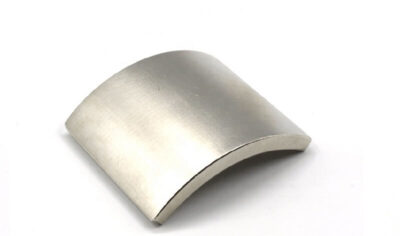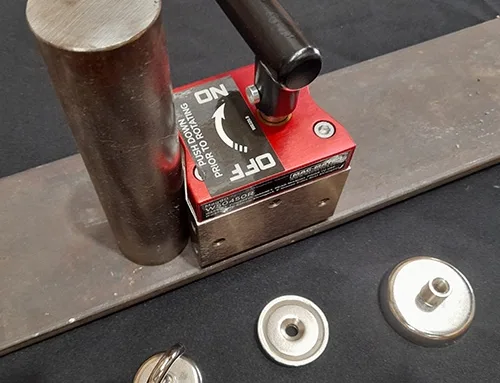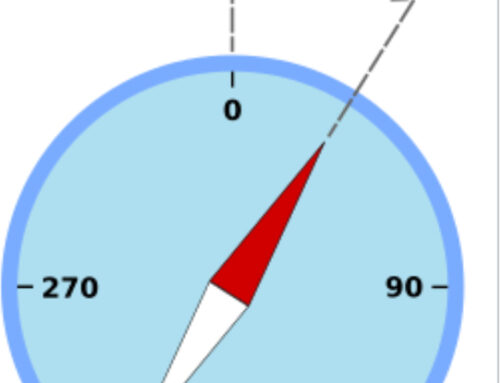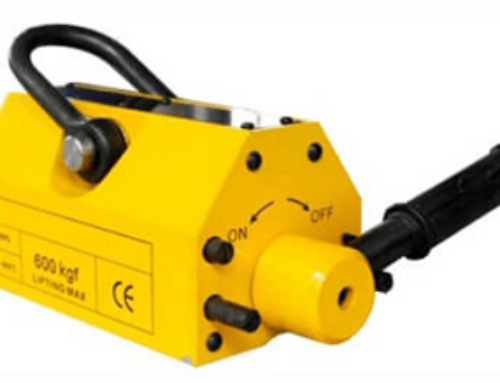Neodymium magnets, also called rare Earth magnets, have become very popular because they are so strong. They are much stronger than ferrite magnets, even though they are very small. But there are some pros and cons to each, so they are better for different things.
Types of Magnets
Magnets create a magnetic field that attracts certain metals. That field can come from a magnet that occurs naturally or from a magnet that has been made. Two of the most common man-made magnets are ferrite and neodymium. They are both called “permanent” magnets because they will stay magnets forever unless they are damaged or demagnetized. But neodymium magnets are much stronger than ferrite magnets, so they are used in a lot more things today.
Ferrite Magnets: Old School, Cheap, but Weak

Ferrite magnets have been around since the 1950s and are still used a lot today because they are cheap. They are made by mixing ferrite materials like strontium or barium ferrite. You can make them into any shape you want. They are also very resistant to corrosion, so they don’t need any coatings on them if they are going to be used in a wet environment. They also don’t lose their magnetism as much at high temperatures. But the big downside to ferrite magnets is they are not very strong.
Neodymium Magnets: Strong, but Expensive

Neodymium magnets were developed in the 1970s. They are part of the rare Earth magnet family and are really strong. They are more expensive than ferrite magnets, but they are way stronger. The strongest neodymium magnets (like N52) are 6.5 times stronger than the best ferrite magnets (like C8). So neodymium magnets are used where you need a small magnet with a lot of pull. You’ll find them in motors, hard drives, and high-end electronics.
But there are some downsides to neodymium magnets. They are more prone to corrosion than ferrite magnets, so they need some kind of protective coating on them. That can be nickel or epoxy. You also have to be careful with them because they are brittle and can break if they hit each other. And they don’t like high temperatures. Most grades of neodymium magnets lose their magnetism if they get too hot.
Ferrite Magnet vs Neodymium
When comparing ferrite magnets to neodymium magnets, here are the things you need to consider:
Magnetic Strength (BHmax): Neodymium magnets are way stronger. The strongest neodymium magnet (N52) is about 6.5 times stronger than the strongest ferrite magnet (C8).
Coercive Force: Neodymium magnets are more resistant to demagnetization than ferrite magnets. A strong neodymium magnet can demagnetize a ferrite magnet.
Max Operating Temperature: Ferrite magnets can handle higher temperatures (up to 250°C) without losing much of their magnetism. Neodymium magnets have lower maximum operating temperatures, but there are some high-temperature grades that can handle up to 220°C.
Corrosion Resistance: Ferrite magnets are better at resisting corrosion and usually don’t need any coatings. Neodymium magnets have to have coatings on them (nickel, epoxy, plastic) because they are made mostly of iron.
What to Use When: Cost vs. Power
When it comes to cost, ferrite magnets are the cheapest. So if you are trying to save money, ferrite magnets are the way to go. But if you look at how much pull force you get per dollar, neodymium magnets usually give you more pull force for your money. For example, a neodymium magnet that has a pull force of 6.44 pounds might cost you $0.99. A ferrite magnet might only have a pull force of 1 pound and cost you $0.34. So when you look at the strength per dollar, neodymium magnets are a better deal.
Durability and Longevity
Neodymium magnets will hold their magnetism for a long time. As long as you don’t heat them up too much or break them, they will only lose about 1% of their magnetism every decade. Ferrite magnets are more likely to lose their magnetism over time and may need to be re-magnetized.
Why Choose Neodymium Magnets?
Ferrite magnets are cheap and work great for a lot of things. But if you need something that is really strong, really small, and will last a long time, you need a neodymium magnet. Neodymium magnets are the reason we can make things so small and efficient today. The downside is they are more expensive and need to have coatings on them. But the upside is they are really strong and will last forever unless you heat them up too much or break them. So if you are using ferrite magnets and want to know if you can use a neodymium magnet instead, talk to an engineer. They may be able to help you get better performance out of your product.





Leave A Comment